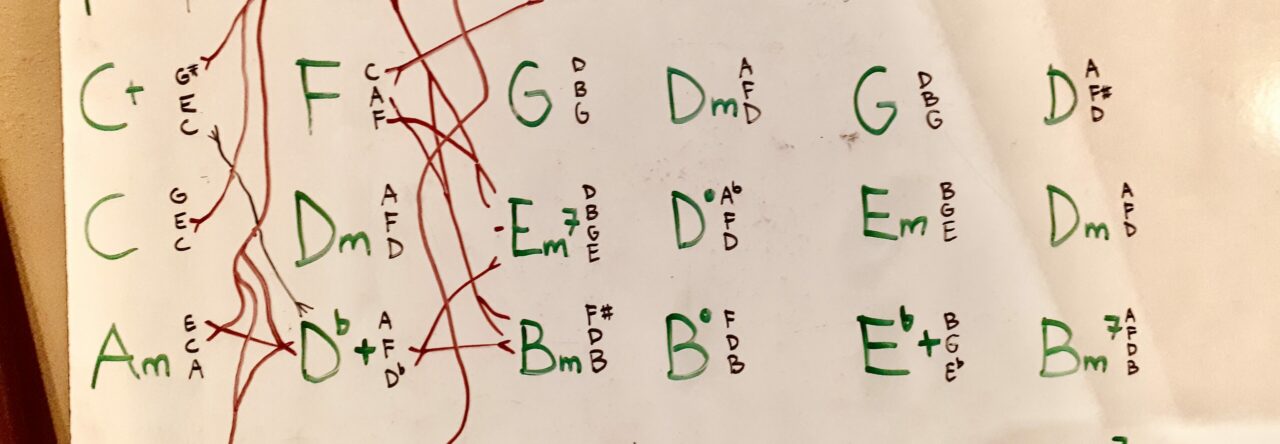Applied Music Theory: Chord Progressions
Age Range and Prerequisites
This micromodule is intended for ages 14 and up—students either in or out of high school. It presupposes familiarity with a chordal instrument—either a fretted string instrument such as guitar, banjo, ukulele, or mandolin, or a keyboard instrument such as piano, organ, or accordion. To get the most out of this micromodule, students should already have some facility with playing and switching between basic major and minor chords on their instruments, such as C major, D minor & major, E minor & major, F major, G major, A minor & major, and (ideally but not necessarily) B minor too. Students must also have prior practical knowledge of at least the C major and G major scales. Any familiarity with seventh chords and suspensions would be handy, but is not required.
Micromodule Objective
The twofold objective of the Applied Music Theory: Chord Progressions micromodule is as follows:
1: to develop in students both a theoretical and a felt understanding of important relationships between chords within a key;
2: to develop in students the ability to apply this understanding in both appreciating some of the most common chord choices of other songwriters and in consciously building and improving one’s own chord progressions.
Universal Design for Learning Principles
All instruction is audio-visual with captions, different playback speeds, and infinite repetition available to all learners. Specialized language is explained. All students are given the option of presenting explanations orally or in writing.
Introductory Video
Instructional Content
- Content 1: Notes, Intervals, Harmony
- Content 2: Keys & Scales
- Content 3: Chords
- Content 4: Chord Qualities (Major/Minor)
- Content 5: Cadences & the V Chord
- Content 6: The IV Chord
- Content 7: The vi Chord
- Content 8: The ii Chord
- Content 9: The iii Chord
- Content 10: The vii and the V7
- Content 11: 7th Chords
- Content 12: Sus 2 & Sus 4 Chords
- Content 13: 6th Chords
- Content 14: Recap
Learning Activities
Activity 1: prepare for and take a quiz about notes, intervals, harmony, keys, scales, chord composition, and chord qualities (major and minor). The multiple choice questions will be based entirely on the first 4 videos in the instructional content.
Activity 2: Find and learn 3 I-IV-V songs in any genre, then write your own 2 I-IV-V progressions. Each song pattern must be at least slightly different. Make a video of you playing them, and reflect—orally in the video, or in writing in an accompanying document—on the differences between these chord progressions and the feelings they elicit in you. This is based on videos 5 and 6.
Activity 3: Form small groups; individually create an alternative chord progression for the melody of the Alphabet Song / Twinkle Twinkle / Baa Baa Black Sheep using the vi, ii, and iii chords (as well as the I, IV, V); share versions among group and exchange feedback. Based on videos 7-10
Activity 4: Within your group, collaborate on an original chord progression that includes 6ths, 7ths, Sus 4 and Sus 2 chords. Each member must submit a video of themselves playing it, along with suggestions (oral or written) for improvement explained and justified. Based on videos 11-14.
